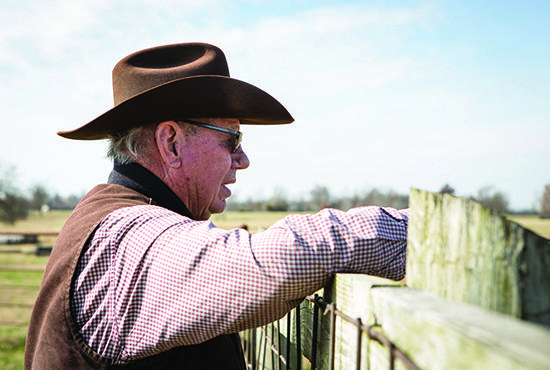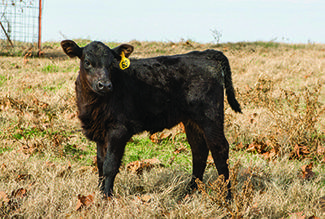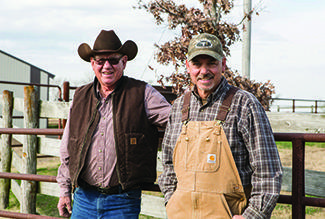Not all farmland is equal—especially in value.
Understanding what makes one piece of farmland more valuable than another presents challenges and helps underscore the correlation between these values and farm wealth. In today’s agricultural climate, where land values have declined for the first time since the 2007-09 recession, this correlation and its effect on agriculture’s future have become more significant.
In the Federal Reserve Bank of Kansas City’s Tenth District, the price of irrigated farmland in the second quarter of 2016 slid 5 percent from a year ago. At the same time, nonirrigated land fell 3 percent and ranchland declined 3 percent, according to Kansas City Fed data released in August.
“Right now, farmland is the only thing of value in farming, but from the looks of it, that may not last much longer,” said Burnard Cristy, who owns ranchland in Neosho, Mo., which is in what locals call the four-state region, comprised of Missouri, Kansas, Oklahoma
and Arkansas.
Cristy raises a few cattle and grows hay and some feed. He says the much richer farmland, suitable for high-value crops, is to the north of his land.
“Land is the basis of everything,” he
said, assessing the last decade of increased
farm wealth.
Cristy is a third-generation farmer—his grandparents started a farm in 1887 in Amarillo, Texas, where they purchased two 640-acre tracts in an area that remains under the original homestead title.
“My cousin still farms that land, growing wheat and other grains,” Cristy said.
The farm has grown to four times the original homestead acreage.
“Fifteen years ago, that land sold for about $500 an acre; now it sells anywhere from $3,000 to $4,500 an acre.”
One reason for the increased value is water—the land has two large wells and pivot irrigation, he said. The area also is ideal for wind energy, with many farmers leasing portions of their land for wind turbines.
“The value didn’t go up because of crop prices,” he said. “My cousin is making per bushel what we made years ago.”
Cristy’s son, Merlin, has 320 acres of ranchland in Neosho adjacent to his father’s property and another 100 acres where he keeps some of the family’s livestock. He recently purchased 40 acres to the south of his property for about $2,900 per acre. His neighbor just to the east sold their ranch in the fall for about $3,500 an acre. Merlin says it’s sometimes difficult to determine what makes one piece of land more valuable than another, especially when they’re adjacent to each other.
Cristy says that’s the conundrum in agriculture.
“The price of land doesn’t necessarily reflect what’s being raised on the land,” he said.

Distribution of farmland values in the Tenth District
Of the 12 Federal Reserve regions, the Tenth District is the most concentrated in agriculture, including average farm income as a share of personal income, farm-dependent counties and agricultural banks.
Although the average value of farmland has declined modestly in recent years, the value of farmland in some parts of the Tenth District—comprised of Colorado, Kansas, western Missouri, Nebraska, northern New Mexico, Oklahoma and Wyoming—has fallen sharply while farmland values in other areas have risen, and the distribution of that value has widened over time, says Cortney Cowley, an economist with the Kansas City Fed, in her recent research.
Historically, farmland values in the Tenth District have correlated with farm income. For example, following the recession, growth in both China’s demand for commodity crops and the ethanol industry supported historically high crop prices and farm income. In response, farmland values increased as much as 30 percent from 2011 to 2012.
When crop prices and farm income started falling in mid-2013, experts expected a corresponding drop in farmland values, Cowley said. On average, however, farmland values increased until the first quarter of 2016, when the values of nonirrigated cropland, irrigated cropland and ranchland declined 2 percent.
During this time, values varied widely. In 2007, farmland values varied from $200 an acre to $4,000 an acre, 58 percent higher than the maximum value in 2001. In 2015, farmland values were more varied, ranging from $300 an acre to nearly $10,000 an acre, an increase of 150 percent from the maximum value in 2007.
Values also varied among Tenth District states, and sometimes varied within an individual state. Cowley said that in 2015, farmland values were the lowest and least variable in Oklahoma and the Mountain States—Colorado, New Mexico and Wyoming—and highest and most variable in Nebraska. When farmland values started to decline, differences among states became more apparent, Cowley said. Historically, farmland values have maintained larger annual gains in states with more corn and soybean production, such as Kansas, Missouri and Nebraska. Growth in the value of nonirrigated cropland in these states consistently outpaced gains in farmland value in Oklahoma and the Mountain States, which are more commonly associated with cattle, wheat and energy production.
The pattern, however, changed in 2014 when values of nonirrigated cropland started to decline in crop-producing states and continued to increase in Oklahoma and the Mountain States. Most notably, in the fourth quarter of 2014, nonirrigated cropland values declined 2 percent from the previous year in Kansas, Missouri and Nebraska but increased 19 percent in Oklahoma.

Reasons for the value distribution
Cowley’s recent analysis of farmland values, using data from the Kansas City Fed’s Ag Credit Survey, U.S. Department of Agriculture and other sources, finds that farmland values are affected by soil quality, natural amenities, climate, agricultural production and other location-specific characteristics, such as proximity to urban areas.
These elements may vary by state and their influence on farmland values may have different outcomes within specific areas. For example, 40 percent of bankers surveyed in 2015 in the Mountain States ranked revenue from mineral rights or access to water as the most important factor contributing to the value of farmland in their areas compared with only 3 percent of bankers in Nebraska, Cowley said.
Although bankers in both areas agreed on the importance of farm income and wealth to farmland values, natural resources were clearly more important contributors to farmland values in the Mountain States, Cowley said.
One common aspect Cowley’s analysis found is that the value of all types of farmland in the Tenth District increases as land quality and precipitation increase. Conversely, the value of all types of farmland declines as temperature increases, and the magnitude of these effects is largest for ranchland.
Cowley says the variance could correlate to the 2012 drought that devastated crops and cattle herds in the Tenth District. Drought aftereffects could place a higher premium on irrigated cropland, especially in areas with higher temperatures. Also, ranchers may have migrated cattle to areas with more rainfall and less prone to drought, increasing land values in those areas.
“As a result, ranchland in areas with lower temperatures and more reliable precipitation may fetch a higher premium since the 2012 drought,” she said.
Just like other real estate, location affects farmland values. For example, farms closer to urban areas return a higher price. The number of farms per county also affects value—a county with a high number of farms can encourage competition, driving up values.
One element that seems to drive farmland value more than location is commodity sales.
The production and sale of crops and livestock vary throughout the district and likely contribute to the wide distribution of farmland values. At the same time, crop revenues seem to have more annual variability than livestock, implying that states with higher-value crop production, specifically, corn and soybeans, could be more susceptible to changes in
crop prices.
Outside of agriculture, oil and gas production could have both positive and negative effects on farmland values, especially in the Tenth District. Lease and royalty payments from oil and gas companies, for example, could boost farm household income and generate spillover effects to farmland values. Oil and gas production also can have a negative impact on farmland value if it damages air and water quality, acoustics, scenic views, or infrastructure. Proximity to production sites also may affect value.
“Since farmland values are significantly associated with shares of commodity sales, if the distribution of farm receipts continues to widen, due to factors such as consolidation, for example, then the distribution of farmland values may also widen,” Cowley said.
A valuable future?
Cristy has seen many changes in agriculture during his lifetime—from improvements in equipment to production practices. He was a child during the Dust Bowl of the late 1930s and early 1940s.
“I still remember people wearing masks to keep from breathing in the dust,” he said. “Some farms weren’t worth their dust and many people left.”
Through changes in farming methods—and the end of a long drought—farms recovered, but the period of severe dust storms displaced many in the agricultural community and changed the economics of farming in
those areas.
The same elements that affect farmland values in the past affect farmland values today, such as soil conditions, commodity prices, the weather, climate conditions, access to water and production practices.
“But today so many things can affect prices, and since the 1980s, everything has changed more drastically,” Cristy said.
Today’s agricultural environment consists of high land values and low commodity prices, and in essence, the increase in farmland values has increased farm equity in the form of unrealized capital gains.
For example, Cristy sold 60 head of cattle in November in Joplin, Mo., for 50 percent less than what he made at the same time last year. The value of his land, however, has remained relatively constant.
The temptation for some farmers, Cristy said, is to expand their acres harvested, cattle raised or acres owned in response to an increase in their land wealth. So, if a farmer borrows and expands, and land values drop with the current low crop prices, the farmer may not have the production profits to pay for the growth.
“We had that back in the late 1970s with the Federal Land Bank pushing farmers to buy up land and more equipment,” Cristy said.
Interests rates were low so many farmers borrowed money to expand their acreage and buy new, technologically advanced equipment. And for a while, the market supported the expansion. By 1980, however, the economy declined, interests rates increased, and both food demand and farmland values fell.
“Several farmers around here lost everything they had,” Cristy said.
In today’s market of falling commodity prices, land wealth can give farmers a false sense of economic security.
“Land is everything, but if you can’t support it, that makes farming difficult,”
Cristy said.

Further Resources
Read “The Dispersion of Farmland Values in the Tenth District” by Cortney Cowley
Comments/questions are welcome and should be sent to teneditors@kc.frb.org.
